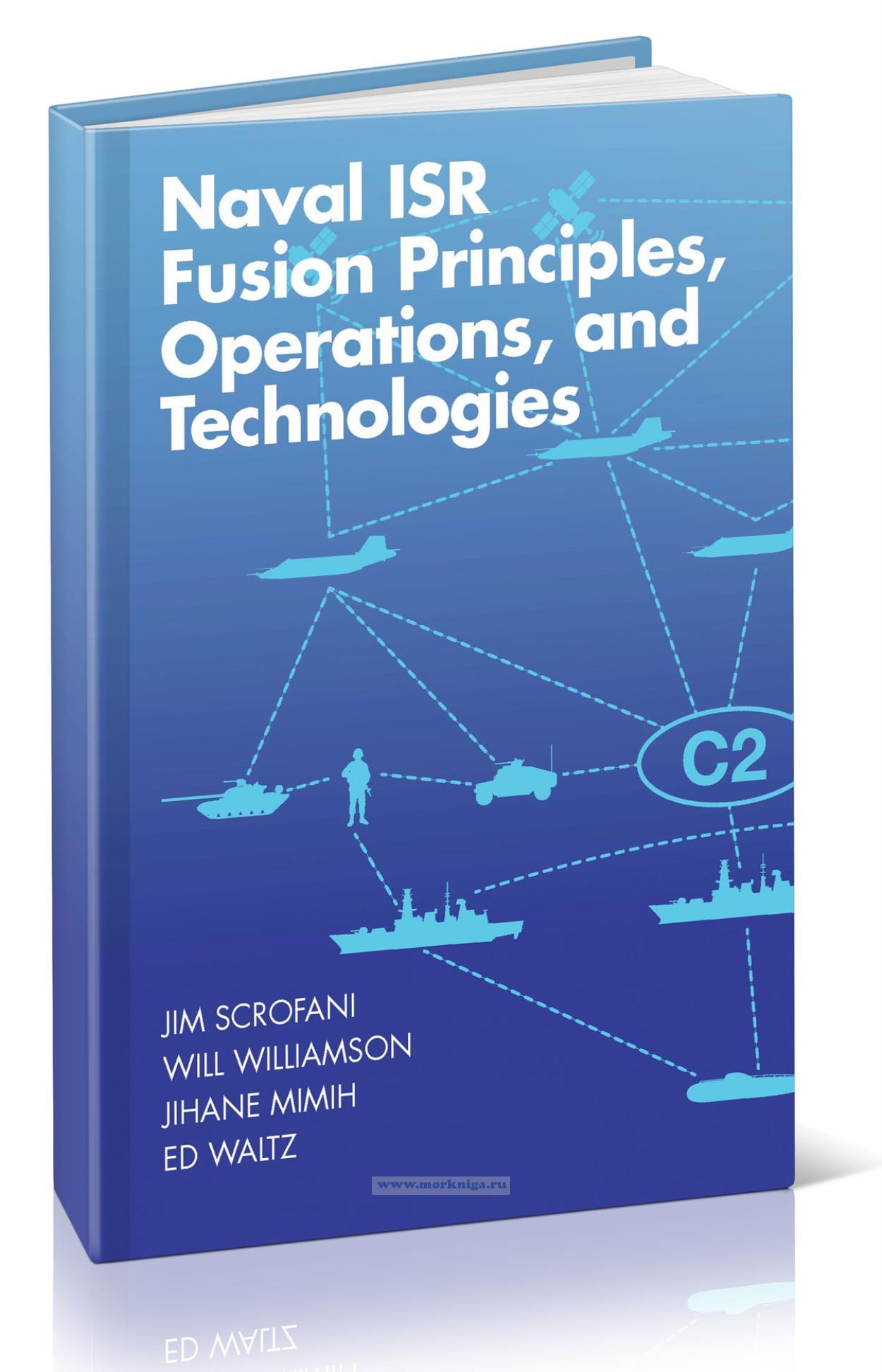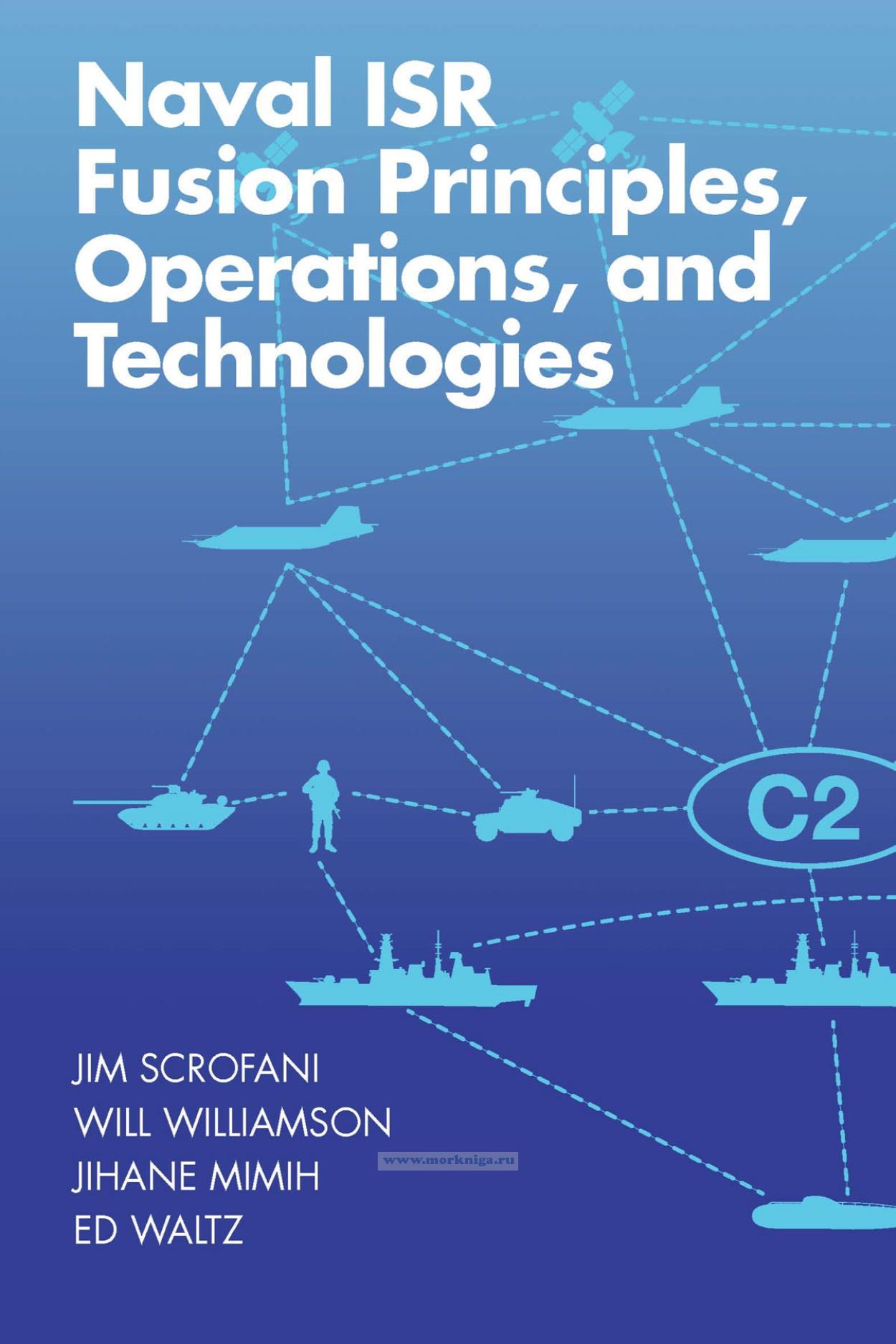Naval ISR Fusion Principles, Operations and Technologies
Книга на английском языке.
With its unique focus on advanced approaches to naval intelligence, surveillance, and reconnaissance (ISR) and the critical underlying technologies needed to empower distributed maritime operations (DMO), this book provides a complete discussion of the operational requirements for current and future naval applications. Readers will find sufficient details to enable the design and development of technical solutions to achieve advanced information fusion as well as command and control concepts. The book approaches distributed naval operations and the role of ISR by applying advanced technologies and addressing future conflicts, providing naval officers and engineers with the information needed to plan and develop advanced systems. This is a great resource for anyone in the ISR, intelligence, space, antisubmarine warfare, electronic warfare, and surface warfare disciplines who are looking for an in-depth understanding of advanced ISR operations and technologies.
Contents
Chapter 1 - The Naval Intelligence Reconnaissance and Surveillance Mission
1.1. The Domain of naval Operations
1.2. Naval Mission Concepts and ISR Roles
1.3. Principles of Distribution, Automation and Speed
1.4. Maritime Domain Awareness and ISR Operations in Conflict and Warfare
1.5. About this book
Chapter 2 - Principles of Operations from Seabed to Space
2.1. Maritime Awareness
2.2. Naval Subsurface and Seabed Domains
2.3. Naval Surface and Airborne ISR
2.4. Naval Space
2.5. Naval Cyber
2.6. A Seabed-to-Space Scenario
Chapter 3 - Distributed Maritime Operations
3.1. Introduction to DMO
3.2. DMO Tactical considerations
3.3. DMO Architecture and Elements
3.4. All-Domain C2-Battle Management
3.5. A DMO Scenario
Chapter 4 - Naval Information Fusion Systems
4.1. Enterprise Level Fusion
4.2. Information Systems Fusion
4.3. Naval C4ISR Challenges
Chapter 5 - All-Domain Fusion and Operation Challenges
5.1. Challenge 1: Spatial Distribution, Association and Latency
5.2. Challenge 2: Temporal Sample Rate and Dynamic Targets
5.3. Challenge 3: Accuracy for Fire Control and Missile Engagement
5.4. Challenge 4: Integrating Cyber Capabilities
Chapter 6 - Maritime MultiINT Fusion Processes
6.1. The JDL Model for Organizing Naval ISR Fusion
6.2. Maritime Object and Situation Assessment Levels 1 and 2
6.3. Maritime Impact or Threat Assessment Level 3
6.4. Maritime Distributed Resource Allocation and Orchestration
Chapter 7 - Sensor Distribution and Adaptation
7.1. Sensor Networks and Grids
7.2. Advanced Wireless Networks
7.3. Functional Nodes on the Maritime Network
7.4. Distributed Data Fusion in Network Operations
Chapter 8 - The Role of AI, Automation, and Autonomy
8.1. Automating Naval Systems
8.2. Sensemaking in a Naval ISR Cotnext
8.3. Command and Control Automation
8.4. Automation in the All-Domain ISR Fusion Scenario
Chapter 9 - Distributed Space Maritime Surveillance
9.1. Smallsat Constellations for Sensing and Communication
9.1.1. Visible Imagery: Planet Labs Flock
9.1.2. Synthetic Aperture Radar: Capella
9.1.3. Signals Collection: Hawkeye 360
9.2. A Networked Constellation for Ocean Surveillance and ISR
9.3. Contributions to Naval ISR
9.4. Surveillance Performance with Examples
9.5. Performance Study Results
9.5.1. Planet FLOCK Based Solutions:
9.5.2. Capella Based SAR Solutions
9.5.3. Hybrid MultiINT Design
Chapter 10 - Future Technologies to Enable All-Domain
10.1. Naval Technology Scanning to Avoid Surprise
10.2. Undersea and Seabed Surveillance
10.3. Quantum Technologies in Naval

